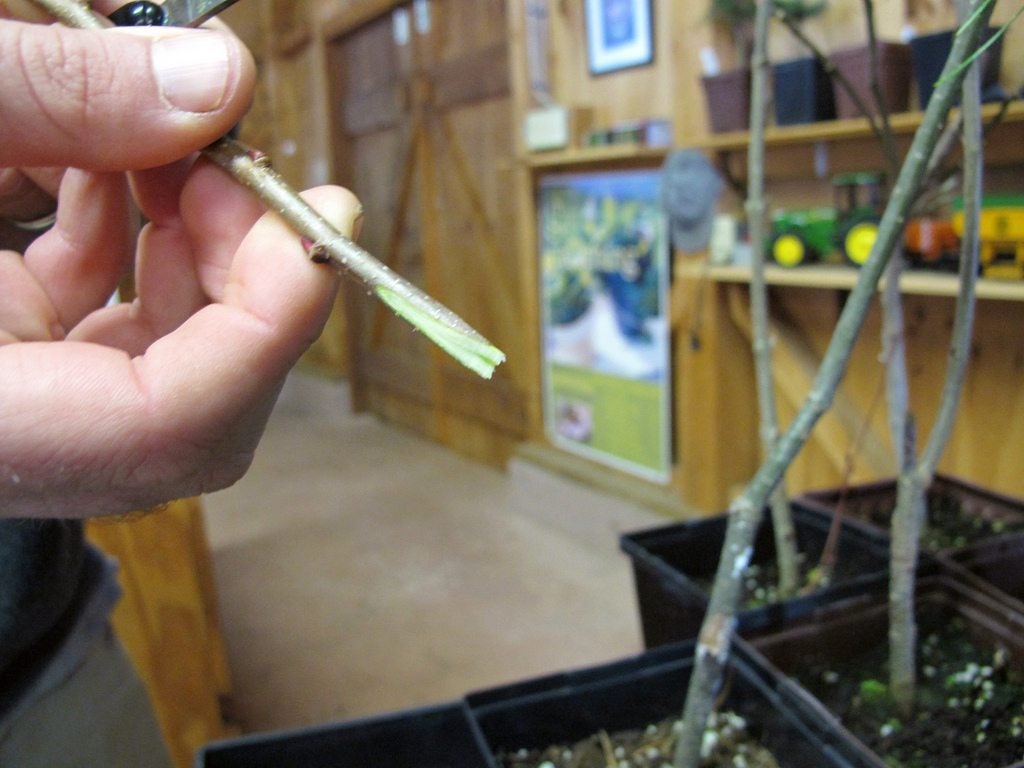What Is A Scion – Learn How To Graft A Scion Onto Rootstock


Grafting is a plant propagation method that many home gardeners are tempted to try their hand at. Once you figure out a technique that works for you, grafting can become a very rewarding hobby. Unfortunately, many gardeners who research how to graft plants are discouraged by confusing tutorials full of technical terms. Here at Gardening Know How, we pride ourselves on providing clear, easy-to-read information for our readers. Grafting is an easy and fun project to try whether you are a beginner or experienced gardener. This article will explain exactly “what is a scion” in plant grafting.
What is a Scion?
The Merriam-Webster Dictionary defines a scion as “a detached living portion of a plant (such as a bud or shoot) joined to a stock in grafting.” In simpler terms, the scion is a young shoot, branch, or bud that is taken from one plant variety to be grafted onto the rootstock of another plant variety. In fruit tree production, for example, scions from different apple trees may be grafted onto an apple rootstock to create a tree that produces several varieties of apples and can self-pollinate. Grafting is especially common in fruit tree production because seed propagation does not result in true to type fruit, and grafting is also a way to quickly grow fruit trees. The fruit that grows from the scion will take on the scion plant characteristics, while the tree itself will have characteristics of the rootstock. For example, dwarf citrus trees are created by grafting the scions of regular citrus varieties on the rootstock of a dwarf variety.
How to Graft a Scion onto Rootstock
Young trees, less than five years old, are best to use for taking scion cuttings. Scions are taken while the plant is dormant, usually from fall through winter, depending on your location and the plant type you are grafting. Scions are taken from last year’s growth, which contains at least two to four buds. The ideal diameter of scions to select should be between ¼ and ½ inches (6 mm. to 1 cm.). It is also important not to use any branches that have signs of pests or disease as scion plants. Use clean, sharp pruners to cut selected scions. Then wrap the sections of cut scions in moist paper towels, moss, or sawdust. Store scions in a cool place, such as the refrigerator, until spring when they can be grafted onto rootstock. How to graft a scion depends on which grafting technique you are planning to try. Scions are used for whip grafting, cleft grafting, side grafting, bridge grafting, and bud grafting. Whip grafting is the most common grafting technique for beginners. In whip or splice grafting, diagonal cuts at about a 45-degree angle are made on both the scion and rootstock. The scion cut is matched up to the rootstock cut, then grafting tape, grafting wax, or rubber bands are used to hold the two pieces together until the cambium layers fuse together. In bud grafting, the scion is just one bud from the selected variety of plant.
Gardening tips, videos, info and more delivered right to your inbox!
Sign up for the Gardening Know How newsletter today and receive a free copy of our e-book "How to Grow Delicious Tomatoes".